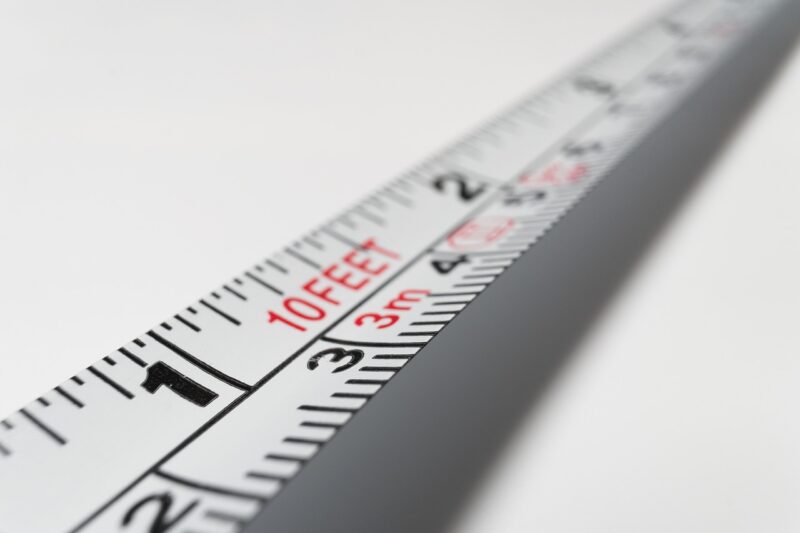
The inch is one of the most widely recognized units of measurement, primarily used in the United States and countries with a historical connection to British measurement systems. Despite the growing trend towards metrication worldwide, the inch retains a firm place in the vernacular of measurements, particularly in sectors like construction, design, and textiles. This article delves into the fascinating history of the inch, exploring its origins, evolution, and the reasons for its continued usage in certain nations.
1. Understanding the Inch: A Basic Definition
An inch (symbol: “in” or “”) is a unit of length in the imperial and US customary systems. It is defined as exactly 2.54 centimeters. Originally, the inch was based on various physical representations, such as an adult’s thumb, the length of three barleycorns, or the average size of a man’s pinky finger. Over the years, these definitions have been refined, contributing to the inch’s stability as a fixed unit of measure.
2. The Origins of the Inch
The history of the inch can be traced back to ancient civilizations. Here’s a brief overview of its historical progression:
- Ancient Egypt (circa 3000 BC): Egyptians used a measurement system that included fractions of a foot, with the base unit possibly being similar to the modern inch. Hieroglyphics depict measurements that suggest an inch-like unit was in practice, closely related to the length of the thumb.
- Roman Influence (circa 100 AD): The Roman inch, derived from the Latin word “uncia”, was equal to one-twelfth of a Roman foot. This definition was foundational in establishing standard measurements throughout the Roman Empire, impacting the measurements still in use today.
- Medieval Variability: During the Middle Ages, the inch saw a variety of interpretations, ranging from 2.5 to 3.0 centimeters, depending on the region. The diversity reflected the local customs and practices, which often led to confusion until standardization efforts were put in place.
- Standardization in the 16th Century: In 1564, the English Parliament began to adopt the inch as a uniform standard, ultimately defining it as exactly 1/36 of a yard. This step solidified the inch’s position in English measurements, paving the way for its use in various colonies.
Thus, the inch evolved as a significant measurement unit across cultures, from Ancient Egypt to modern-day America.
3. The Adoption of the Inch Globally
While the metric system began making inroads into many countries post the French Revolution, several nations retained the inch mainly due to historical ties with Great Britain. Here are some critical moments in this adoption:
- The British Empire: The British Empire’s vast reach led to the spread of imperial measurements, including the inch, in countries like Canada, Australia, and New Zealand. A strong cultural heritage in architecture and craftsmanship further encouraged ongoing use in daily life.
- The United States: The US, along with some Caribbean nations, is a notable exception where the inch remains dominant, particularly in industries such as construction, automotive, and garment manufacturing. These sectors are ingrained with the inch system, leading to a reluctance to shift entirely to metric.
- Continued Use in Specialized Fields: Industries such as aviation, engineering, and medicine often use imperial measurements due to historical context. For example, aircraft are still measured in inches in many cases due to legacies in design and manufacturing practices by companies like Boeing and Lockheed Martin.
The retention of the inch in these countries can be attributed to deep-rooted practices, societal preferences, and the significant effort required to change measurement systems.
4. The Practicality of the Inch in Modern Times
Today, the inch continues to be relevant in various scenarios:
- Construction and Carpentry: The inch is prevalent in building materials, blueprints, and site layouts. Measurements are typically quoted in feet and inches, with both builders and architects accustomed to this system, ensuring precision in trade practices.
- Retail and Fashion: In apparel, inches are used to denote sizes (like waist size, inseam, or bust measurements), making it easier for consumers familiar with the imperial system to select suitable clothing.
- Home Improvement: DIY enthusiasts often refer to the inch system for measuring space and materials; for example, tools and hardware like nails and screws are sold by inches, making it convenient for homeowners who follow these measurements for installations.
- Technology and Engineering: Many technological products, from television screens to computer monitors, are often expressed in inches, linking directly to consumers’ familiarity and expectations in product specifications.
Even for nations that have adopted the metric system, the inch remains embedded in culture and industry, showcasing its surprising adaptability and endurance.
5. The Future of the Inch
Given the ongoing worldwide shift towards metrication and the endeavors of global standardization organizations, the future of the inch remains uncertain.
- Convergence of Standards: As global trade and travel continue to increase, discussions of converging measurement standards are becoming more frequent. Countries may find it beneficial to align with the metric system for efficiency and clarity, leading to a potential decrease in the inch’s prominence over time.
- Cultural Resistance: However, deep-seated resistance in countries like the US and among industries reliant on imperial measurements may slow this transition significantly. The cost of re-education, recalibration, and establishing new practices presents a significant hurdle.
In summary, while the inch may gradually become less prominent globally, it is likely to remain relevant where cultural and historical reasons keep it firmly rooted.
Conclusion
The inch embodies a rich historical narrative that highlights the interplay between culture, identity, and international standards. Its journey from ancient measurements to modern usage illustrates how specific units can transcend time and become integral to national identities. Though increasingly sidelined by metrication in many parts of the world, the inch continues to have a compelling presence especially in the US, showcasing its lasting impact on various industries and everyday life trends. As cultures evolve and adapt measurement systems, only time will tell how the inch will integrate into our ever-changing global landscape.








